Yoga for Beginners Easy Poses to Start With
Yoga is a practice that has been around for thousands of years, offering a unique blend of physical postures, breathing exercises, and mindfulness that helps to enhance flexibility, strength, and mental clarity. Whether you’re looking to reduce stress, improve your fitness, or find balance in your life, yoga offers something for everyone. For beginners, the world of yoga may seem overwhelming, but the good news is that there are plenty of simple, beginner-friendly poses to get started with. In this blog, we’ll guide you through easy yoga poses for beginners, providing a step-by-step breakdown of each one and its benefits.
Why Start Yoga?
Before we dive into the poses, it’s helpful to understand the benefits of starting a yoga practice:
- Flexibility: Yoga helps increase flexibility by gently stretching your muscles and joints.
- Strength: Many yoga poses require you to hold your body weight, which builds muscle strength over time.
- Mental Clarity: Yoga’s meditative nature can help calm your mind, reduce stress, and improve focus.
- Balance: As you work on different poses, your sense of balance and coordination will improve.
- Breathing: Focused breathing techniques, known as pranayama, promote relaxation and mindfulness.
Starting yoga doesn’t require any special equipment other than a yoga mat and comfortable clothing, making it an accessible and convenient way to improve your overall well-being.
Getting Ready to Practice
Before jumping into the poses, here are some general tips for beginners:
- Start Slow: It’s important to ease into yoga to avoid injury. Don’t push yourself too hard in the beginning.
- Listen to Your Body: Yoga is about self-awareness and respecting your body’s limits. Never force yourself into a position.
- Focus on Your Breath: Breathing deeply is an integral part of yoga, helping you to maintain calm and stay centered during each pose.
- Create a Quiet Space: Find a quiet place where you can practice without distractions, allowing you to focus on your movements and breathing.
- Consistency: Yoga is most beneficial when practiced regularly. Aim for 10-20 minutes a day to start.
Now, let’s look at some of the easiest yoga poses for beginners that you can incorporate into your practice.
1. Mountain Pose (Tadasana)
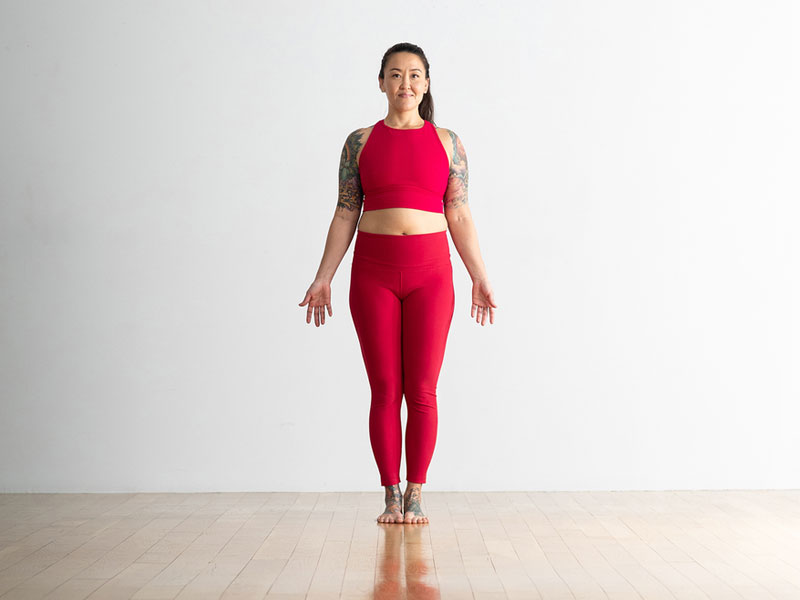
How to Do It:
- Stand with your feet hip-width apart, toes pointing forward.
- Engage your thighs, lift your kneecaps, and gently draw in your belly button to activate your core.
- Reach your arms overhead, palms facing inward, while keeping your shoulders relaxed.
- Stand tall, lengthening through your spine, and focus on your breath.
Benefits:
- Improves posture and balance.
- Strengthens legs and core muscles.
- Increases body awareness.
Mountain pose is the foundation for many standing poses, making it an important starting point.
2. Downward-Facing Dog (Adho Mukha Svanasana)
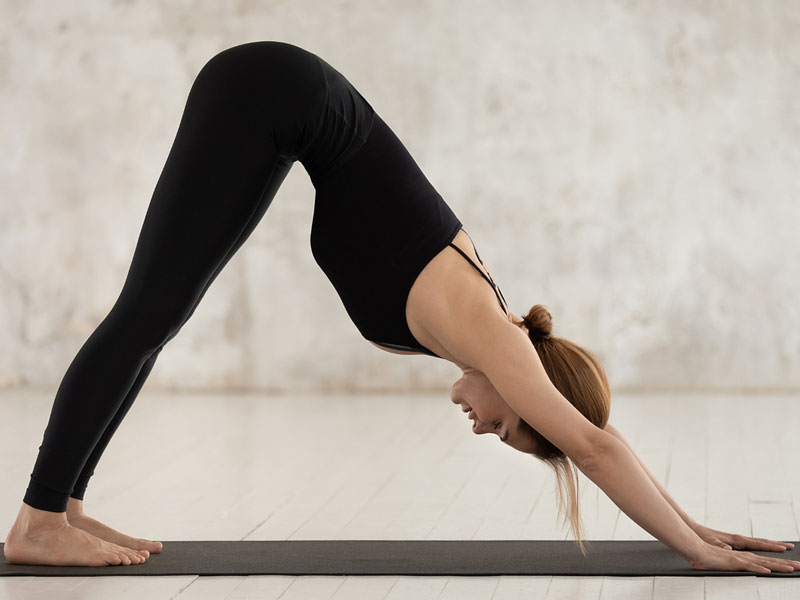
How to Do It:
- Start in a tabletop position (hands and knees on the mat), with your wrists directly under your shoulders and knees under your hips.
- Press into your palms, lift your hips toward the ceiling, and straighten your legs as much as possible, aiming to create an inverted “V” shape with your body.
- Keep your head between your arms, ears aligned with your upper arms, and breathe deeply.
Benefits:
- Stretches and strengthens the whole body.
- Increases flexibility in the hamstrings, calves, and spine.
- Improves circulation and relieves tension in the back.
Downward dog is a key pose in most yoga flows, helping to stretch and strengthen the body.
3. Child’s Pose (Balasana)
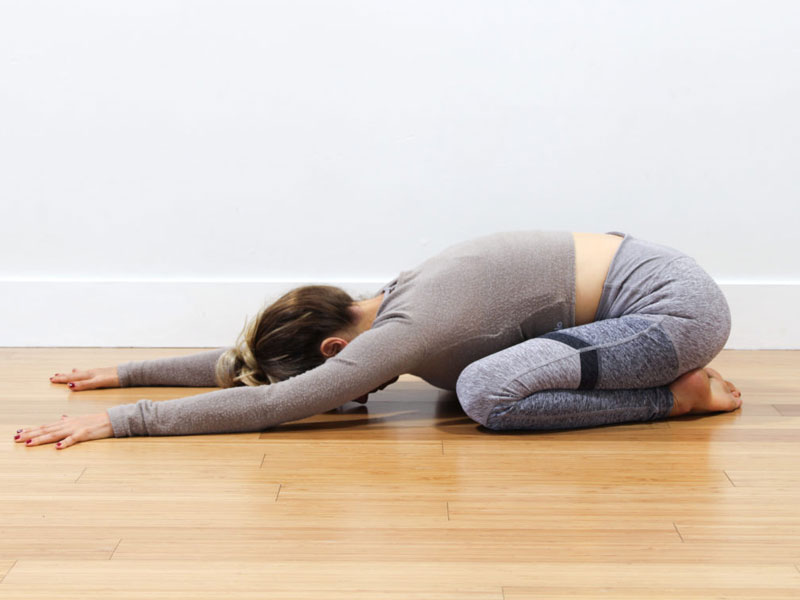
How to Do It:
- Start by kneeling on the mat with your knees wide apart and toes touching behind you.
- Sit back on your heels, then fold your body forward, bringing your forehead to the mat.
- Stretch your arms out in front or rest them alongside your body with your palms facing up.
- Breathe deeply and relax into the pose
Benefits:
- Provides a gentle stretch for the back, hips, and thighs.
- Relieves stress and tension, calming the nervous system.
- Restores energy and provides a moment of pause.
Child’s pose is a great resting pose and can be used whenever you need to take a break during your practice.
4. Cat-Cow Pose (Marjaryasana-Bitilasana)
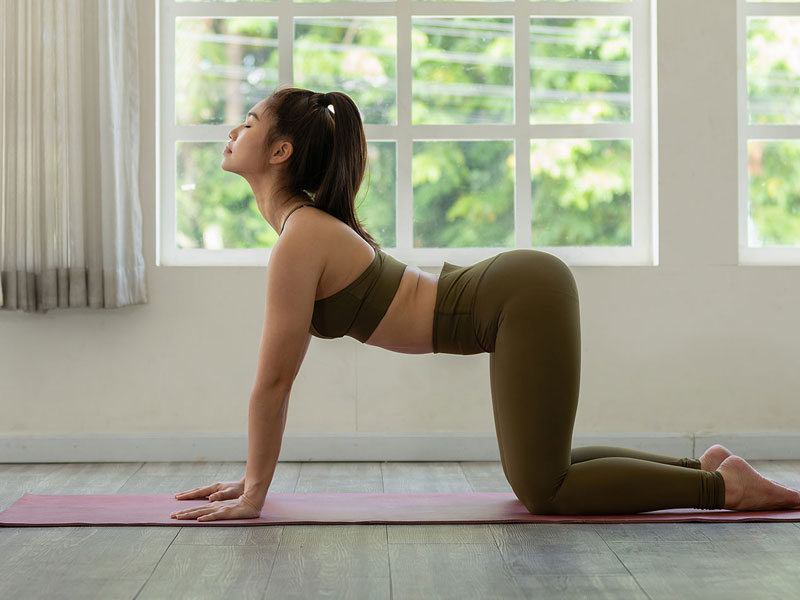
How to Do It:
- Start in a tabletop position with your wrists directly under your shoulders and knees under your hips.
- On an inhale, drop your belly towards the mat, lifting your tailbone and chest while looking slightly upward (Cow pose).
- On an exhale, round your spine, tuck your chin to your chest, and press the floor away from you (Cat pose).
- Continue to flow between these two positions with each inhale and exhale.
Benefits:
- Stretches the spine, neck, and shoulders.
- Improves flexibility and mobility in the spine.
- Helps relieve tension in the back and neck.
Cat-Cow is a great warm-up pose that helps to loosen up the spine and bring mobility to your body.
5. Seated Forward Bend (Paschimottanasana)
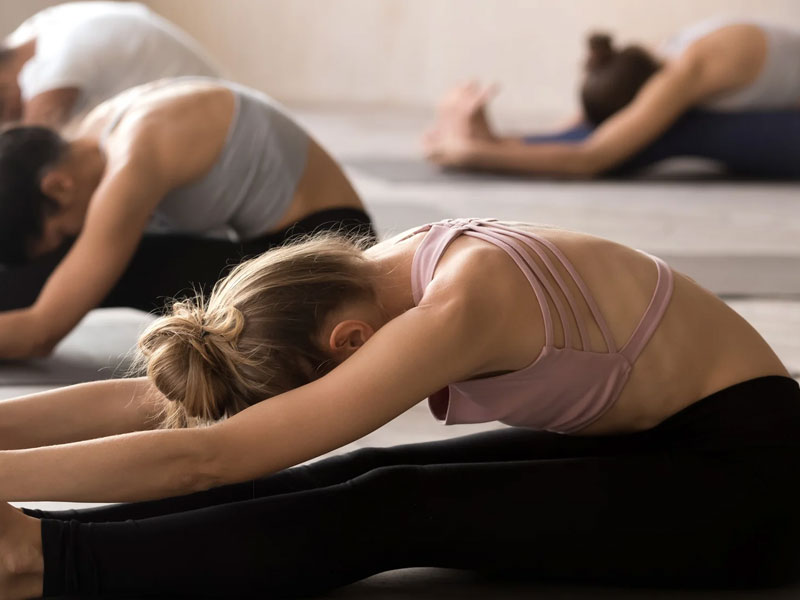
How to Do It:
- Sit on the floor with your legs extended straight in front of you.
- Flex your feet and keep your spine tall.
- On an inhale, lengthen your spine, and as you exhale, gently fold forward from your hips, bringing your chest toward your thighs.
- Reach for your feet or ankles, keeping your back as straight as possible.
- Breathe deeply and hold the pose for several breaths.
Benefits:
- Stretches the hamstrings, lower back, and spine.
- Calms the nervous system and reduces anxiety.
- Improves flexibility in the back and legs.
This pose is excellent for stretching the back and hamstrings while also helping to calm the mind.
6. Cobra Pose (Bhujangasana)
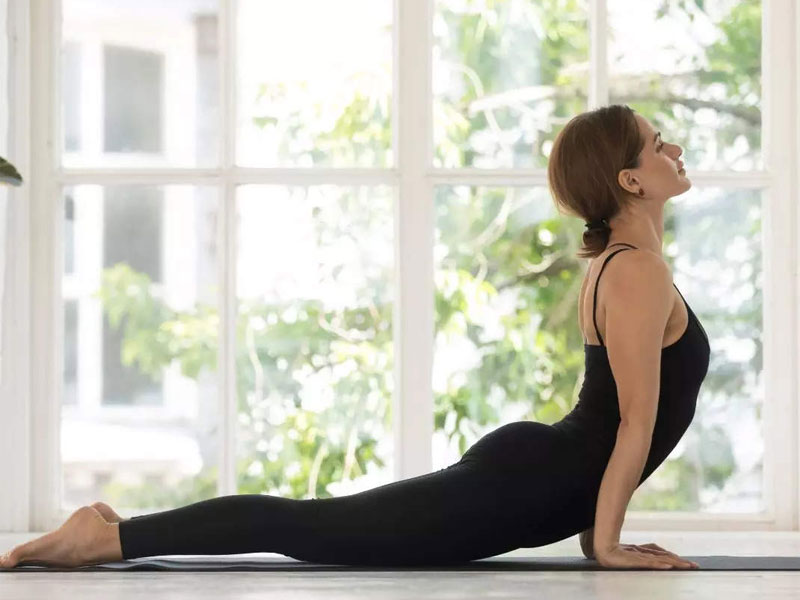
How to Do It:
- Lie on your stomach with your legs extended and your hands placed flat on the floor beneath your shoulders.
- Inhale and gently press into your palms, lifting your chest and head off the floor, keeping your elbows slightly bent.
- Keep your shoulders away from your ears and your lower body grounded to the mat.
- Hold the pose for a few breaths before gently lowering back down.
Benefits:
- Strengthens the spine and back muscles.
- Opens the chest and stretches the abdomen.
- Improves posture and relieves tension in the shoulders.
Cobra pose is a great backbend that gently stretches the chest and helps to improve spinal flexibility.
7. Bridge Pose (Setu Bandhasana)
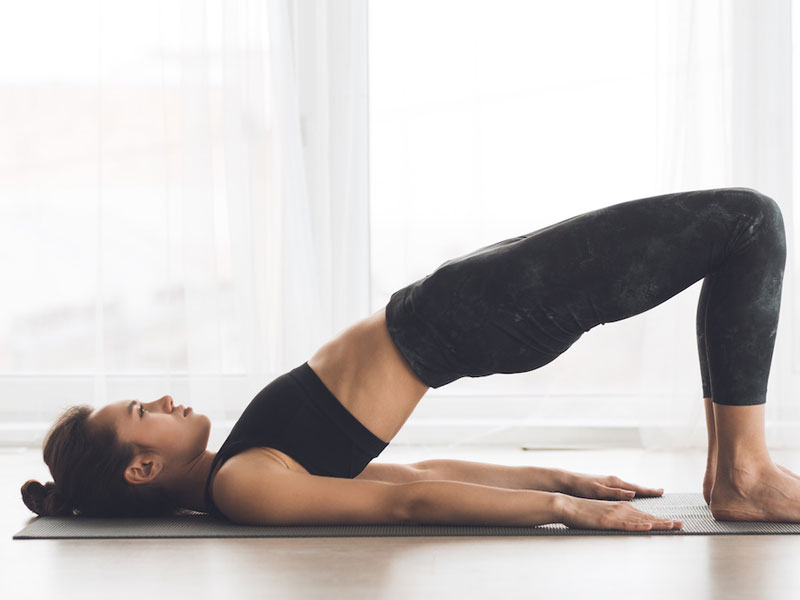
How to Do It:
- Lie on your back with your knees bent and feet flat on the mat, hip-width apart.
- Press into your feet as you lift your hips toward the ceiling, engaging your glutes and core.
- Keep your arms by your sides, palms facing down, or interlace your fingers under your back.
- Hold the position for a few breaths before gently lowering your hips back to the mat.
Benefits:
- Strengthens the glutes, hamstrings, and lower back.
- Opens the chest and relieves tension in the spine.
- Improves posture and circulation.
Bridge pose is a gentle backbend that can be therapeutic for the lower back.
8. Corpse Pose (Savasana)
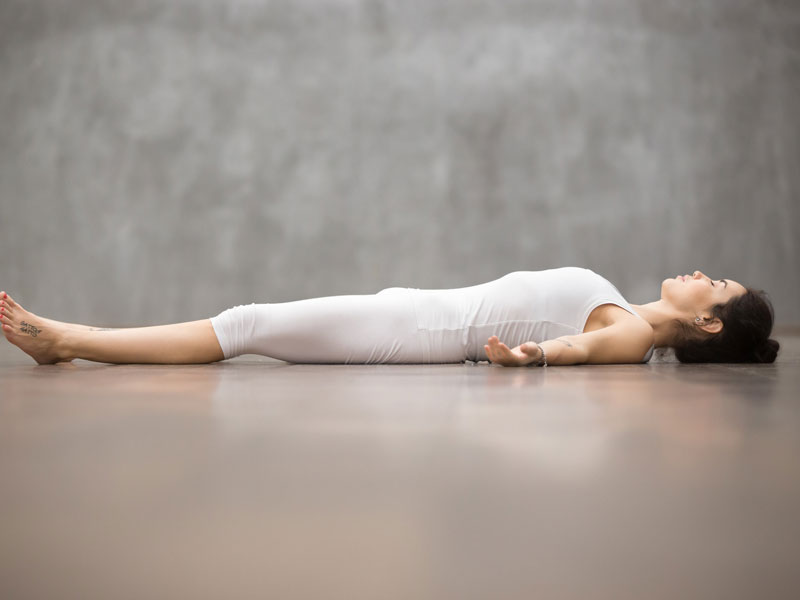
How to Do It:
- Lie on your back with your legs extended and arms by your sides, palms facing upward.
- Close your eyes and focus on your breath, allowing your body to fully relax.
- Let go of any tension and stay in this pose for 5-10 minutes.f
Benefits:
- Promotes relaxation and stress relief.
- Calms the nervous system.
- Allows the body to integrate the benefits of your practice.
Savasana is the ultimate relaxation pose that helps to center and calm your body after a yoga session.
Final Thoughts
Yoga is a beautiful journey that allows you to connect with your body and mind, and starting with simple poses is the best way to build a strong foundation. By practicing regularly and gradually increasing the intensity of your poses, you can experience the many benefits of yoga, from improved flexibility to reduced stress. Remember to be patient with yourself and listen to your body as you move through your practice. Whether you practice for a few minutes or an hour, yoga can be a transformative experience for your overall health and well-being.


